Some basic infrastructure will be required if you intend to run livestock. The quality and cost will depend on the number of head, production goals and the docility of your animals.Fencing
Good fencing, from a management perspective, is important. If you are going to run a small herd with females, bulls and weaners then making sure that the fences are able to contain your stock will be vital. Remember bulls chasing cycling females will do their very best to destroy a fence and weaners trying to get back to mum can also be pretty persistent.
We have found that the most successful type of wire for our cattle has been hinge joint or ring lock (a special type of stock netting) with one or two strands of barb on top. The hinge joint keeps the small calves in and the barbwire stops the bulls trying to push over the top.
Five strands of barbwire will also work effectively but in my experience three strands of barb are not sufficient for small breeds. Plain wire is of no use whatsoever as cattle will just push through it and walk to wherever they want to go.
Electric fences also work well but do require regular checking and testing. They can also be a much cheaper option on a semi-permanent basis and can be easier and faster to put up. The nice thing about electric fences is the flexibility it allows. You can easily graze areas with just a couple of stands of wire such as around the hay shed or your front lawn. It works perfectly for strip grazing and we use it regularly in summer to feed off our forage sorghum. We allow the cattle to eat one strip at a time, moving across the paddock, which ensures no excess feed is trampled and as such there is no wastage.
It is very important to educate cattle to an electric fence system wherein they will soon gain a very healthy respect for all types of wire. Be careful when you first put cattle into an area fenced by electric wires. I have one paddock of 40 acres that is divided into six permanent strips by an electric fence system. When I first opened the gate and let my commercial cows in there they all took off at such a rate kicking their heels up with excitement that it ended up being a total disaster. They ran straight through the fences and I had busted wires everywhere. The secret to education is to introduce them slowly and I should have spent more time teaching them to respect an electric fence system.
Laneway systems work the best and are also the easiest allowing one person to move stock on their own. Our system is designed so that all the laneways feed into the yards. This reduces the time taken to muster the cattle by at least half and also reduces the stress levels of both cattle and handler.
When building new fences it is always a good idea to site gates in corners rather than the middle of a fence line. Corners prevent animals from running past the gateway and act as a forcing yard if you have large mobs.
Are Small Cattle Rough on Fences?
No and in actual fact they are much easier to contain than larger breeds. The biggest problem arises where people interpret small cattle as being able to be constrained by fencing that is inadequate to contain anything. Small cattle won’t need such robust fencing as larger breeds but they will still require adequate fencing. A client once rang me, as they were concerned they would have to sell their two exceptionally quiet 1st cross females they had bought from me. They kept escaping into their neighbours paddocks and I was assured her husband had fixed all the fences. On inspection I discovered that their block was very high up on the hill with not very good quality pasture and their neighbour was down on the lush river flat. Also their fencing was very old and if you much as put a finger on any of the star pickets they would practically lie parallel with the ground. Her husband had merely gone along and tried to straighten up the star pickets but the tension in the wire was also so loose the cattle were easily able to push through it especially when the grass was so much greener on the other side.
Tip: If your metal or mesh gates get bent due to any reason, which happens over time, then just take them off their hinges and lie them flat on a bitumen road or concrete floor and drive over them to straighten them out. It only takes five minutes and works exceptionally well.
Do the calves tend to 'escape' a lot?
Calves tend not to venture too far from Mum. If they do escape they normally will come back at feed time. I use hinge joint on all my boundaries to stop the calves getting out on the main road, as this is where they can easily frighten and run into oncoming traffic. A perfect example is along our riverbanks that we have fenced off to stop the stock causing any erosion and to allow the banks to rejuvenate with natural species. We used five strands of barb wire in preference to hinge joint so that in times of flooding not as much damage will occur to the fences due to floating debris. On one occasion a newborn calf had fallen asleep beside the fence and when it awoke it had slipped under the bottom wire. She was having problems getting back to Mum but was easily found due to the bellowing of both mum and bub late in the afternoon at feed time.
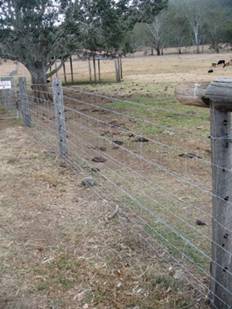
Figure 1: Permanent electric fencing set up for rotational grazing.
Figure 2: Hinge joint fencing with two strands of barb wire on top.
Paddocks
The decision on how many paddocks to have and what size will depend on if you are going to breed your own animals and how to manage your bulls. You will need to have enough paddocks so that you can segregate heifers from bulls from the time they are weaned until joining age. You may also need to keep those weaners away from their mothers for some months once they are fully weaned.
Each paddock will need to have adequate protection provided from both the heat and the cold either naturally in the form of trees or man made such as shelter sheds. As well as this animals will need access to a good clean supply of water. In very large paddocks it maybe necessary to install two watering points to allow cattle to graze all available pasture effectively as cattle do not like to move too far away (5 km but some producers prefer 2km) from their water supply. 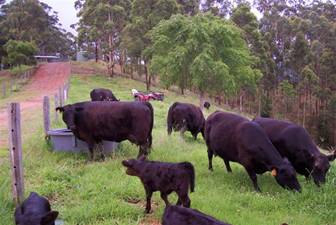
Figure 3: These paddocks are designed to join into dirt laneways which then feeds uphill to the yards.
Understanding the principles of Rotational Grazing: The quantity, quality and
utilisation of pasture and feed grown can greatly affect your productivity and profitability. Rotational grazing is based on the principle of moving stock around a number of paddocks, grazing each for a fixed period of time to improve all these three factors.
There are a number of advantages of such a system and they include:
Greater use of pasture production and increased stocking rates of up to 20%. The reason for this is that rotational grazing is highly intensive (larger groups on smaller areas) and so reduces patch grazing i.e. all of the available pasture is eaten.
It will also reduce broadleaf weed growth due to the intensity as they are either eaten or trampled.
Worm infestations are reduced as the life cycle is broken by cows continually moving onto fresh pasture.
Improved husbandry as stock are viewed more regularly as they are moved from paddock to paddock.
By grazing small areas intensively then resting them you not only prevent the pastures from deteriorating you also lessen the pasture that is lost to trampling. Cows feet consume five times more grass than their mouth.
A simple way to start is with a four paddock system and this can be very beneficial for those who want to run all their animals together. The amount of plant regrowth is entirely dependent on the number of stock grazing each paddock and the rest period between grazing. This in turn determines how much pasture energy is converted into saleable meat. You will need to ensure that the cattle have a water supply for each paddock.
In times of moderate pasture growth then the grazing period is greater allowing sufficient growth in all paddocks. In times of fast pasture growth then the rotation is greater so that the pasture is not able to get too long and decline in nutritional value as the most productive pasture is that in the short green growing phase with a high digestibility and high energy value.
Yards
The size and breed of your cattle are two of the factors that should be considered when designing cattle yards. Small cattle don’t require expensive and extensive yard systems. They certainly don’t need heavy-duty high rails or crushes. Your requirement will also depend on how quiet your cattle are. If you can call your animals with a bucket of feed, catch them with a halter and tie them up with ease then nothing much more than a yard is required. This being the case light framed portable yard panels will work perfectly.
If they are not halter trained then you will need some basic equipment as there are times when you will need to restrain an animal whether it be to administer vaccinations or seek veterinary assistance. You will also need to consider what functions you will wish to perform in your yards, as this will also affect your design and layout. A race is preferable which feeds into a crush or head bail. If you don’t want to go to the expensive of a crush then a walkthrough head bail will suffice. At least this will allow you to restrain the animals without putting yourself at any risk of being injured. 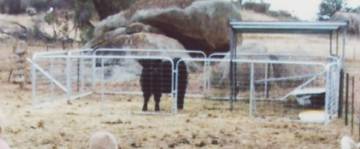
Figure 4: If you only have a very small number of cattle then yards can be built out of gates, very effectively, as shown in this photo.
The minium recommendation is one-yard, a race and head bail. You will also need a loading ramp if you intend to move cattle to and from your property. There are some very good portable ones on the market with adjustable ramp heights so they be used for a range of transport options from body trucks to small trailers.
Functions: Most yards will need facilities for receiving and holding stock, drafting, loading and unloading, weighing and basic herd health. Pregnancy testing, artificial breeding, dehorning, branding, castrating, vaccinating, weighing and spraying may also be considered.
Table 1: Various yard functions
| Function Facilities | Options |
| Drafting | Drafting race or yard |
| Vaccinations, ear tagging, tattooing, treating eyes | Head bail |
| Using pour ons or drenching | Race and or head bail |
| DNA hair sampling | Race or crush |
| Weighing | Scales |
| Loading and unloading | Ramp |
| Dehorning | Head bail or calf cradle |
| Castration | Head bail or calf cradle |
| Veterinary: pregnancy testing, AI | Crush with veterinary acces |
Hazards: The hazards involved with handling cattle are from injury due to kicking or charging, crushing against handling facilities and illness transmitted by cattle (zoonoses). To reduce the risk of any such accidents occurring you will need to consider the size, breed and temperament of the animals being handled, the competency of the handler and the design of the facilities. You need to design the yards for the way cattle behave drawing them through the yards and reducing distractions. You also need to design them for safety and ease of the handlers with self-latching gates, easy access and surfaces that reduce risks of falls and trips.
The Site: If you do have to build a set of yards the design, including the way they face in relation to the sun, and the direction of the slope, is extremely important. Consider the time of day as well that cattle will be worked in the yards as light and wind factors can also affect the way stock behave. Natural animal behaviour should be taken into account; for example, cattle prefer to run uphill and towards the light. They tend to baulk at dark shadows.
Yards will need to have an all weather access especially to the loading ramps which is why they are often located closeby to the property boundary. If this being the case then it is a good idea, if the yards are located a long way from the home, to have some lockable gates at least at the end of the loading ramp to deter stock theft. Natural shade is also an advantage especially if stock have to be left there for long periods in hot conditions.
Environmental Considerations: Covered work areas, especially the race and the crush, make the stock and handler more comfortable and therefore less stressed. They also provide the handler protection from the sun. Concrete floors and covered crushes reduce the dust and subsequent risk of infection when cattle are being vaccinated or veterinary treatment is being administered.
Shade: It is good idea to make sure your yards have some type of shade to prevent against heat stress and skin damage. Shade can be provided in the form of trees, shade cloth or covered sheds. Trees need to be hardy to be able to withstand high levels of urea and acid soils. In colder climates deciduous trees maybe preferable to enable the sun to penetrate during the cooler months to provide warmth and also assist in drying out the surface in wet times. Some species to consider include the Plane Tree, White Cedar, Schinus Molle (Pepper Tree) and Ficus Benjamina. Remember to site trees so they don’t interfere with the flow of the yards, fences or other structures as they grow. Shade cloth can also be erected easily over yards but check the level of protection offered as it can vary from 15% to 100%. Permanent structures are the most effective but also the most expensive and are a long term investment. A high roof line is preferable to allow the air to flow through.
Size of yards: the yards need to be adequate to hold the biggest herd and the largest animal which will be handled. For large size breeds the recommended space ranges from 1.5 to 2.2 square metres per adult beast. Forcing yards should not be too large, a maximum of 6.5 metres; otherwise two to three people will be needed to force the cattle up. A top rail of 1.6 metres is the normal recommended height and more than adequate for small breeds. The recommended race length is 1.6 metres per adult beast with the minimum length for up to 10 head being 3 metres. Recommended width is between 660mm and 710mm wide for wide European breeds.
Design: Well designed yards can make cattle handling very easy for one person whereas poorly designed yards can make it a bloody nightmare as well as being extremely dangerous.
- Cattle will move more easily in a curved shaped race rather than a straight one as they think they are going back to where they came from.
- Solid sides work better as the cattle can’t see any distractions outside.
- It is good idea to make sure your yards have shade and water so animals can be left there if there need to be treated on a regular basis.
- Drafting yards of hexagonal or octagonal design, which are centrally located, enable the removal of calves from cows, selecting cattle for sale, marking or branding and separating different mobs.
When designing yards remember to keep safety in mind by:
- It is better to be able to handle cattle from outside the race.
- Try and avoid having to handle cattle through gaps in yard rails as this increases the risk of crushed hands and arms. Reversing cattle will not see you and/or not be able to stop.
- Don’t make the race too narrow or too wide so as the handler does not have to intervene.
- Head restraints in the crush will reduce the incidence of any accidents when tattooing or ear tagging.
- Avoid acute angles in the yards where cattle can get trapped.
- Inward swinging gates are the best except for the entry gate.
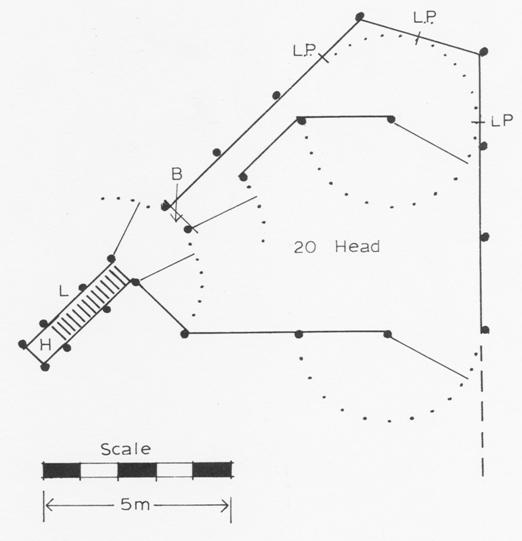
Figure 5: These yards are designed to handle a maximum of 20 head. Drafting capacity is enhanced by yards on both sides of the race.
Code
B = headbail
L = loading ramp
LP = locking
Source: Adapted from Farm Cattle Handling SCA Report No 35.
Equipment: The equipment you buy will not only be determined by price but also by the functions you will be performing such as castrating calves, dehorning, pregnancy testing, weighing etc.
Crush: The most important piece of equipment you will have in your yards will be a crush. Once again function will determine what features your crush will need to have. Functions include pregnancy testing, artificial insemination, embryo transplant, vaccinating, tattooing, dehorning and these will determine if you need vet sections, baulk gates, a squeeze mechanism and split side gates.
A veterinary section is recommended and will be required for artificial insemination and embryo transplants, as the cow will need to be restrained in a clean, shaded, stress free environment. The head bail is not required for AI so the cow needs to be contained in the crush allowing the AI technician access from the rear end. The benefit of a vet section is that it allows access to the animal in the crush while still protecting the handler.
We have a parallel squeeze on our crush (one that squeezes equally from both sides) which not only prevents the smaller animals from turning around in the crush but it restricts the amount of movement available to the animals making them feel more secure if we have to do veterinary treatment.
Split side gates are also very useful for access to vaccinating animals. Putting hands through crushes is a recipe for injury especially if the animal moves in an upward position jamming your hand or arms up against the bars.
Figure 6: The crush above is a basic crush with no vet section. 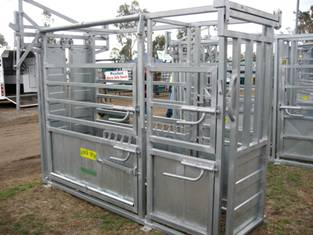
Figure 7: The crush above has a separate vet section, access panels on both sides with split gates top and bottom and a side squeeze.
Ancillary Equipment: the list of extras available is only constrained by monetary considerations. All work extremely well and can help reduce the manpower, stress and costs involved in handling livestock. This would include:
- Electronic scales allows you to perform a number of useful additional functions such as monitor animal health, determine weaning weight, select animals for sale and slaughter, evaluate breeding performance for genetic selection, accurately measure drenches, pour ons and medications as nearly all are based on an application rate per kg so by accurately weighing your animals prior you eliminate excess wastage and therefore reduce costs.
- Automated drafting systems normally only installed when large herd numbers are involved.
- Calf cradles are marketed as safer, easier and faster for handling large number of calves for marking, branding and dehorning.
- Integrated NLIS ID equipment: this can range from readers, scanners and wands to fully automated race readers. Electronic devices can allow producers to keep tack of individual weights, health and joining records of animals.
Loading Facilities: the slope to the ramp should not exceed 20 degrees and should be approximately 900 mm wide. Whilst this may seem wide for small cattle there maybe times you will need to load and unload regular sized cattle so the ramp will need to be able to accommodate these as well. Non-slip footing also needs to be provided which does not create undue noise. Make sure there are no large gaps between the back of the truck and the ramp wherein an animals foot can get caught and easily break in haste to get off a truck. You will need to make sure that the truck is able to back straight onto the ramp so the posts should be even and straight.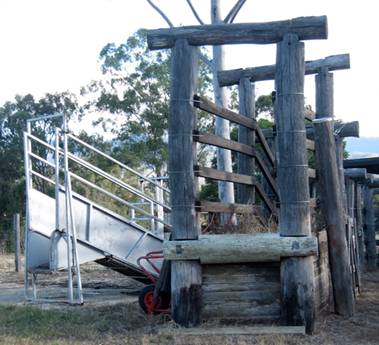
Figure 8: We have two ramps side by side. They both feed into the same race. The portable one on the left is adjustable for horse floats and trailers whilst large livestock carriers use the timber ramp.
What to learn More About Cattle Infrastructure?
Further information is contained in the book Small Cattle for Small Farms. To purchase a copy click on the image below

About the Author
Margo Hayes has been involved with a small breed of cattle, Australian Lowline, for 12 years and more recently RedLine and has shown the Grand Champion Australian Lowline Bull at the Royal Brisbane Show for eight consecutive years, the Grand Champion Carcass at the Royal Brisbane Show in 2008 and recently written a book titled Small Cattle for Small Farms.



